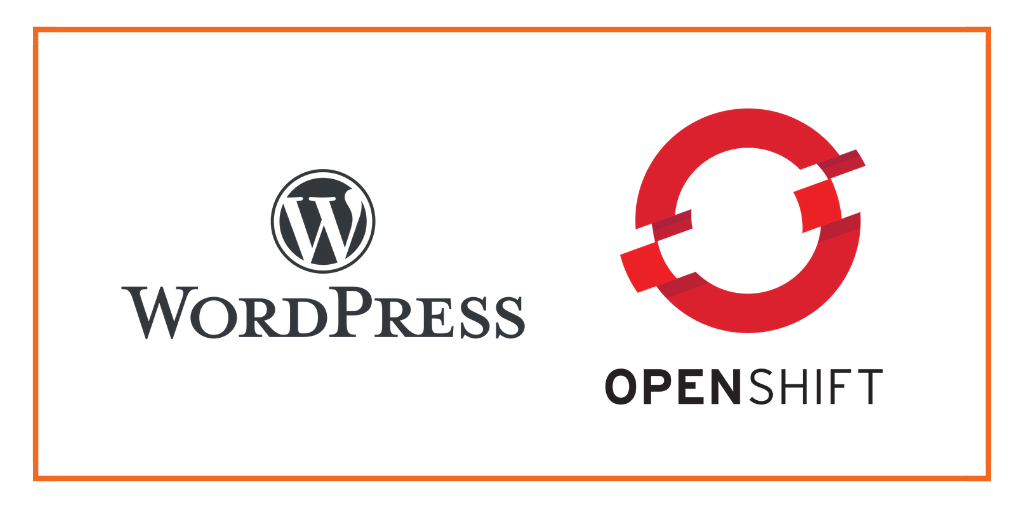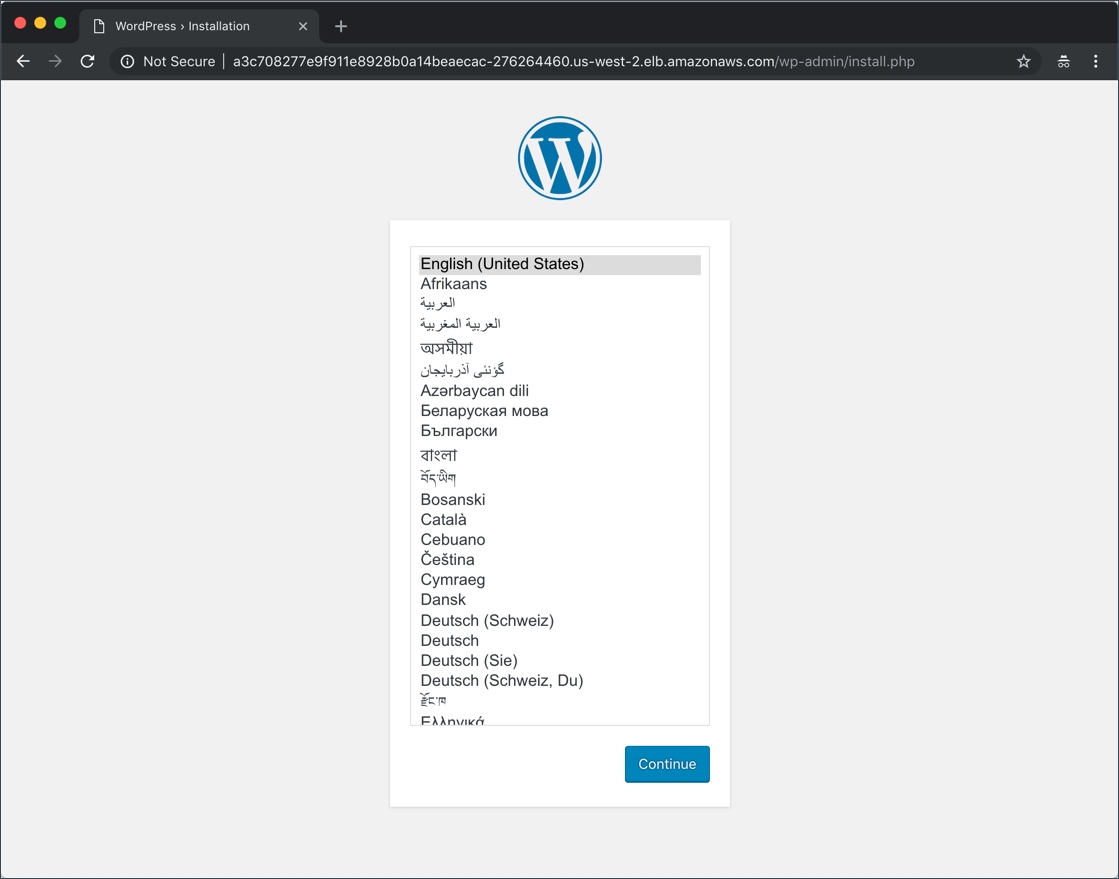Portworx & Red Hat Hands-on Labs Register Now

This post is part of our ongoing series on running WordPress on Kubernetes. We’ve published a number of articles about running WordPress on Kubernetes for specific platforms and for specific use cases. If you are looking for a specific Kubernetes platform, check out these related articles.
Running HA WordPress on Amazon Elastic Container Service for Kubernetes (EKS)
Running HA WordPress on Azure Kubernetes Service (AKS)
Running HA WordPress on Google Kubernetes Engine (GKE)
Running HA WordPress on IBM Cloud Kubernetes Service (IKS)
Running HA WordPress with Rancher Kubernetes Engine (RKE)
Running HA WordPress on IBM Cloud Private
And now, onto the post…
In the world of Kubernetes demos, WordPress is one of the canonical examples, but usually, the complexities of WordPress itself is just an afterthought. WordPress is just the container that we deploy to demonstrate some other capability, not a multifaceted application that needs to be deployed, scaled, backup up, and managed. For all the countless examples, rarely do they talk about what it means to run a multi-tenant WordPress environment from the perspective of a service provider selling WordPress sites for profit. The reason? Running a multi-tenant WordPress environment on Kubernetes is actually quite hard and these examples are designed to show simple things. So the complexity is swept under the rug.
Today we discuss some of the hard problems you need to solve in order to run a multi-tenant WordPress deployment as a service provider. Portworx has a lot of experience helping hosting companies and other service providers run lots of WordPress sites for paying customers. This blog is a summary of that work.
In these multi-tenant WordPress deployments, there are a few important capabilities that customers must achieve.
- It is important to host as many independent, isolated WordPress sites on the same host in order to maximize resource utilization and keep costs low. This means that often we need to have 100s of sites on a single server.
- If a WordPress site is consuming too many resources and harming the performance of other sites (i.e. the noisy neighbor problem), it must be easy to relocate that site to another host (or to move less resource intensive sites away leaving fewer sites on the host).
- It must be possible to independently backup a single WordPress site even if it is running on a host with dozens or hundreds of other sites.
- It must be possible to limit resource consumption at the site level and upsell additional resources to the end-customer. For example, if they need more storage, we should be able to “turn on” that feature easily.
Why Portworx is perfect for large scale multi-tenant WordPress deployments
Portworx wasn’t designed with only WordPress in mind, but you might think that it was. First, Portworx supports persistent storage and data management for two critical WordPress components:
- A highly available single-writer MySQL database that typically scales vertically
- Fast “multi-writer” or “shared” volumes for file uploads needed as the WordPress PHP container is scaled horizontally.
Without a solution for both MySQL and NFS-like file storage, a persistent storage solution for Kubernetes cannot claim to be able to handle WordPress workloads. But just persistent storage isn’t enough either.
As a service provider running WordPress sites, it is all about density, density, density
WordPress is said to run 28% of all websites on the Internet. That is a phenomenal installed base of some 75 million sites. While some of these are massive sites like TechCrunch or The New Yorker, the vast majority of WordPress sites are much smaller. That means as a WordPress hoster, your business probably follows the 80-20 rule. 80% of your revenue comes from 20% of your sites. Or said another way, 80% of your sites only account for 20% of your traffic.
That means that you need to think about your business in two ways:
- You need to provide a reliable service to a large number of low-traffic sites while minimizing infrastructure costs since your margins come in large part by placing more sites on the same physical infrastructure.
- You need to provide a white-glove, highly performant and reliable experience to a small number of sites that make up the bulk of your revenue.
At the same time, you need a migration path for some sites to move from low-volume to high-volume plan, without disrupting the customer or your own internal operations teams.
Let’s look at how Portworx solves these requirements in turn.
How to achieve 100s of WordPress sites per host
As we have seen, each WordPress site requires 2 persistent volumes. One for MySQL, one for shared storage. A Linux host, however, is limited to 40 volumes maximum when using a solution like Amazon EBS or a traditional SAN. That means that unless you use the same volume for multiple sites, you are limited to 20 sites per host, no matter how large the host is. This is often the choice that WordPress hosters make, but what they gain in density, they lose in isolation. Since multiple sites share the same volumes, you cannot backup and restore only a single site as easily.
With Portworx however, a single block device provided by Amazon, Google, Azure, your existing SAN or even the bare metal server can be divided up in hundreds of virtual volumes, allowing hundreds of sites to run on the same host. Here is how one Portworx customer, Aurea, was able to leverage Portworx for running hundreds of apps on the same host:
“Our clusters are highly dense, meaning we run a lot of containers per host. On AWS, we use huge instances. The recommendation from Kubernetes is 100 pods per VM. Already, we’re running 200-300 pods per host. Also, since most of the apps that we run are stateful, we can easily have 200-300 volumes per host as well. And we’re working to push these limits even further. Because of these densities enabled by Kubernetes and Portworx, we’re easily saving 60-90% on our compute costs. Portworx itself was between 30-50% cheaper than any other storage solution we tested.”
Dealing with the noisy neighbor problem
We’ve just seen how Portworx can help service providers increase the density of their WordPress deployments while simplifying operations. Now let’s look at how hosters can solve one of the biggest problems in multi-tenant environments: noisy neighbors.
If you categorically knew which 20% of your customers would account for 80% of your traffic at all times, solving the noisy neighbor problem would be a one-time migration. But, because traffic patterns change over time, this is a hard problem to solve. Portworx does a few critical things to help.
First, in addition to using Kubernetes to limit pod resources like Memory and CPU, you can use Portworx to automatically place different workloads on different storage hardware for different classes of service. For instance, you might sell your customers a premium “performance” plan if they are expecting heavy usage and they are performance sensitive. Alternatively, cost-conscious customers might opt for a “budget” plan that offers reliability but doesn’t guarantee blazing fast performance. On the backend, these plans can be mapped to Portworx “storage classes” that automatically place high-end plans on SSDs and low-end plans on HHDs.
Additionally, since you don’t always know when one a customer site will suddenly experience a spike in traffic draining resources from neighbor sites, Portworx enables you to move applications between environments using PX-Motion. With PX-Motion you can move a single pod or group of pods to a different Kubernetes environment with a single command.

Often a hosting customer will call their service provider the day before they are going to be on a national TV and say “I really need my site to work tomorrow.” This often leads to a lot of scrambling around and manual tuning, but with PX-Motion, moving the customer to an environment with more resources is as easy as kubectl apply -f wp-migration.yaml.
The above described moving one heavy load site off a multi-tenant cluster. This is often the best option if you have some advance warning before a large traffic spike. However, in the middle of a large traffic event, it is often better to move low traffic sites away from the heavy traffic site, instead of vice versa. This is also possible with PX-Motion.
“Oops, I deleted all my blogs. Can you help?”
Every WordPress hoster has heard this before. Accidents happen and when they do, your customer calls you, desperate. The problem for large multi-tenant environments is that true site-based isolation is difficult, especially if you have gotten past the 20-sites per host limit described above by pooling storage for multiple sites into the same volume.
With Portworx, these limitations don’t apply. Each WordPress site gets its own MySQL and shared volumes, which can be fully and independently controlled, managed, snapshotted, backed up and migrated. For example, you can easily set up a backup policy that snapshots a single WordPress environment (MySQL and files) every hour and back it up to an object store. Then, if you get that frantic phone call from a customer, you can easily restore just their site, without affecting anyone else. Importantly, using Portworx 3DSnap, these snapshots of MySQL and WordPress files are application consistent, not just crash consistent, ensuring easy recover from backup.
Let’s see that is action on Red Hat OpenShift
Now that we’ve looked at a high level at how Portworx helps service providers run large scale multi-tenant WordPress environment, let’s go a step deeper and look at how it works on OpenShift.
Red Hat OpenShift is a comprehensive enterprise-grade application platform built for containers powered by Kubernetes. OpenShift lets developers quickly build, develop, and deploy applications on nearly any infrastructure, public or private. It offers enterprises full control over their Kubernetes environments, whether they’re on-premise or in the public cloud, giving teams freedom to build and run applications anywhere.
Portworx recently achieved Red Hat certification for Red Hat OpenShift Container Platform and PX-Enterprise is available in the Red Hat Container Catalog. This certification enables enterprises to confidently run high-performance stateful applications like databases, big and fast data workloads, and machine learning applications on the Red Hat OpenShift Container Platform. Learn more about Portworx & OpenShift in our Product Brief.

This post looks at how to run an HA WordPress on Red Hat OpenShift, an enterprise container platform which makes it easy to create, configure, and manage a cluster of virtual machines that are preconfigured to run containerized applications. We have other blogs about how to run a similar setup on Amazon EKS, Azure AKS, and Google GKE.
- Launch an OpenShift cluster
- Install cloud native storage solution like Portworx as a daemon set on OpenShift
- Create a storage class defining your storage requirements like replication factor, snapshot policy, and performance profile
- Deploy MySQL using OpenShift
- Deploy and scale WordPress using OpenShift
How to install and configure an OpenShift Origin cluster
OpenShift Origin can be deployed in a variety of environments ranging from VirtualBox to a public cloud IaaS such as Amazon, Google, Azure. Refer to the official installation guide for the steps involved in setting up your own cluster. For this guide, we run an OpenShift Origin cluster in Microsoft Azure. Follow the instructions mentioned in Azure documentation.
Your OpenShift cluster setup should look similar to the below configuration. It is recommended that you run at least 3 nodes for the HA configuration.
$ oc get nodes NAME STATUS ROLES AGE VERSION mycluster-infra-0 Ready <none> 8d v1.9.1+a0ce1bc657 mycluster-master-0 Ready master 8d v1.9.1+a0ce1bc657 mycluster-node-0 Ready compute 8d v1.9.1+a0ce1bc657 mycluster-node-1 Ready compute 8d v1.9.1+a0ce1bc657 mycluster-node-2 Ready compute 8d v1.9.1+a0ce1bc657

Though almost all the steps can be performed through the OpenShift Console, we are using the oc CLI. Please note that most of the kubectl commands are available through oc tool. You may find the tools used interchangeably.
Installing Portworx on OpenShift
Since OpenShift is based on Kubernetes, the steps involved in installing Portworx are not very different from the standard Kubernetes installation. Portworx documentation has a detailed guide with the prerequisites and all the steps to install on OpenShift.
Before proceeding further, ensure that Portworx is up and running on OpenShift.
$ oc get pods -n=kube-system -l name=portworx portworx-27wtw 1/1 Running 1 1d portworx-lfh6b 1/1 Running 0 1d portworx-q8j94 1/1 Running 0 1d

We can check the status of Portworx by running the following commands:
$ PX_POD=$(oc get pods -l name=portworx -n kube-system -o jsonpath='{.items[0].metadata.name}')
$ oc exec -it $PX_POD -n kube-system -- /opt/pwx/bin/pxctl status
Status: PX is operational
License: Trial (expires in 30 days)
Node ID: mycluster-node-2
IP: 10.2.0.4
Local Storage Pool: 1 pool
POOL IO_PRIORITY RAID_LEVEL USABLE USED STATUS ZONE REGION
0 LOW raid0 20 GiB 3.1 GiB Online default default
Local Storage Devices: 1 device
Device Path Media Type Size Last-Scan
0:1 /dev/sdd STORAGE_MEDIUM_MAGNETIC 20 GiB 06 Aug 18 16:58 UTC
total - 20 GiB
Cluster Summary
Cluster ID: px-cluster-8764
Cluster UUID: c29f07f2-dada-4f36-8f29-1f1ba2d5e198
Scheduler: kubernetes
Nodes: 3 node(s) with storage (3 online)
IP ID StorageNode Used Capacity Status StorageStatus Version Kernel OS
10.2.0.4 mycluster-node-2 Yes 3.1 GiB 20 GiB Online Up (This node) 1.4.0.0-0753ff93.10.0-862.9.1.el7.x86_64 CentOS Linux 7 (Core)
10.2.0.6 mycluster-node-1 Yes 3.1 GiB 20 GiB Online Up 1.4.0.0-0753ff93.10.0-862.9.1.el7.x86_64 CentOS Linux 7 (Core)
10.2.0.5 mycluster-node-0 Yes 3.1 GiB 20 GiB Online Up 1.4.0.0-0753ff93.10.0-862.9.1.el7.x86_64 CentOS Linux 7 (Core)
Global Storage Pool
Total Used : 9.2 GiB
Total Capacity : 60 GiB

Once OpenShift Origin cluster is up and running and Portworx is installed and configured, we will deploy a highly available MySQL database.
Creating a Kubernetes storage class for MySQL
Through storage class objects, an admin can define different classes of Portworx volumes that are offered in a cluster. These classes will be used during the dynamic provisioning of volumes. The storage class defines the replication factor, IO profile (e.g. for a database or a CMS), and priority (e.g. SSD or HDD). These parameters impact the availability and throughput of workload and can be specified for each volume. This is important because a production database will have different requirements than a development Jenkins cluster.
In this example, the storage class that we deploy has a replication factor of 3 with I/O profile set to “db_remote” and priority set to “high.” This means that the storage will be optimized for low latency database workloads like MySQL and automatically placed on the highest performance storage available in the cluster. Notice that we also mention the filesystem, xfs in the storage class.
$ cat > px-mysql-sc.yaml << EOF
kind: StorageClass
apiVersion: storage.k8s.io/v1beta1
metadata:
name: px-ha-sc
provisioner: kubernetes.io/portworx-volume
parameters:
repl: "3"
io_profile: "db_remote"
priority_io: "high"
fs: "xfs"
EOF
$ oc create -f px-mysql-sc.yaml storageclass.storage.k8s.io "px-ha-sc" created $ oc get sc NAME PROVISIONER AGE px-ha-sc kubernetes.io/portworx-volume 10s stork-snapshot-sc stork-snapshot 3d
Create the storage class and verify its available in the default namespace.
$ oc create -f px-mysql-sc.yaml storageclass.storage.k8s.io "px-ha-sc" created $ oc get sc NAME PROVISIONER AGE generic (default) kubernetes.io/azure-disk 52m px-ha-sc kubernetes.io/portworx-volume 13s stork-snapshot-sc stork-snapshot 17m
Creating a MySQL PVC on OpenShift
We can now create a Persistent Volume Claim (PVC) based on the Storage Class. Thanks to dynamic provisioning, the claims will be created without explicitly provisioning a persistent volume (PV).
$ cat > px-mysql-pvc.yaml << EOF
kind: PersistentVolumeClaim
apiVersion: v1
metadata:
name: px-mysql-pvc
annotations:
volume.beta.kubernetes.io/storage-class: px-ha-sc
spec:
accessModes:
- ReadWriteOnce
resources:
requests:
storage: 1Gi
EOF
$
persistentvolumeclaim "px-mysql-pvc" created
$ oc get pvc
NAME STATUS VOLUME CAPACITY ACCESS MODES STORAGECLASS AGE
px-mysql-pvc Bound pvc-739a7151-9a8d-11e8-9135-000d3a1a1cdf 1Gi RWO px-ha-sc 13s
Deploying MySQL on OpenShift
Finally, let’s create a MySQL instance as a Kubernetes deployment object. For simplicity’s sake, we will just be deploying a single MySQL pod. Because Portworx provides synchronous replication for High Availability, a single MySQL instance might be the best deployment option for your MySQL database. Portworx can also provide backing volumes for multi-node MySQL cluster. The choice is yours.
$ cat > px-mysql-app.yaml << EOF
apiVersion: apps/v1
kind: Deployment
metadata:
name: mysql
spec:
strategy:
rollingUpdate:
maxSurge: 1
maxUnavailable: 1
type: RollingUpdate
replicas: 1
selector:
matchLabels:
app: mysql
template:
metadata:
labels:
app: mysql
spec:
schedulerName: stork
containers:
- name: mysql
image: mysql:5.6
imagePullPolicy: "Always"
env:
- name: MYSQL_ROOT_PASSWORD
value: password
ports:
- containerPort: 3306
volumeMounts:
- mountPath: /var/lib/mysql
name: mysql-data
volumes:
- name: mysql-data
persistentVolumeClaim:
claimName: px-mysql-pvc
EOF
$ oc create -f px-mysql-app.yaml deployment "mysql" created
The MySQL deployment defined above is explicitly associated with the PVC, px-mysql-pvc created in the previous step.
This deployment creates a single pod running MySQL backed by Portworx.
$ oc get pods NAME READY STATUS RESTARTS AGE docker-registry-2-7dwtc 1/1 Running 1 1d mysql-654cc68f68-gxxbd 1/1 Running 0 22s registry-console-1-j9cg2 1/1 Running 1 1d router-1-lqsxs 1/1 Running 1 1d
We can inspect the Portworx volume by accessing the pxctl tool running with the MySQL pod.
$ VOL=`oc get pvc | grep px-mysql-pvc | awk '{print $3}'`
$ PX_POD=$(oc get pods -l name=portworx -n kube-system -o jsonpath='{.items[0].metadata.name}')
$ oc exec -it $PX_POD -n kube-system -- /opt/pwx/bin/pxctl volume inspect ${VOL}
Volume : 984374852040473937
Name : pvc-739a7151-9a8d-11e8-9135-000d3a1a1cdf
Size : 1.0 GiB
Format : xfs
HA : 3
IO Priority : LOW
Creation time : Aug 7 22:01:35 UTC 2018
Shared : no
Status : up
State : Attached: mycluster-node-1 (10.2.0.6)
Device Path : /dev/pxd/pxd984374852040473937
Labels : pvc=px-mysql-pvc
Reads : 138
Reads MS : 62
Bytes Read : 2371584
Writes : 659
Writes MS : 96013
Bytes Written : 172965888
IOs in progress : 0
Bytes used : 126 MiB
Replica sets on nodes:
Set 0
Node : 10.2.0.6 (Pool 0)
Node : 10.2.0.5 (Pool 0)
Node : 10.2.0.4 (Pool 0)
Replication Status : Up
Volume consumers :
- Name : mysql-654cc68f68-gxxbd (e9daceb6-9a8d-11e8-9135-000d3a1a1cdf) (Pod)
Namespace : default
Running on : mycluster-node-1
Controlled by : mysql-654cc68f68 (ReplicaSet)

The output from the above command confirms the creation of volumes that are backing MySQL database instance.
Exposing MySQL as a Headless Service
To enable WordPress deployment to talk to the MySQL deployment, we need to expose it as a Kubernetes service. Since it is an internal service accessed by name, we will create a headless service that doesn’t assign an IP address. Refer to Kubernetes documentation for more details on the headless service.
The YAML file below has the definition of MySQL headless service.
$ cat > px-mysql-svc.yaml << EOF
apiVersion: v1
kind: Service
metadata:
name: mysql
labels:
app: mysql
spec:
ports:
- port: 3306
name: mysql
clusterIP: None
selector:
app: mysql
EOF
$ oc create -f px-mysql-svc.yaml service/mysql created
Verify the creation of the service by describing it. Note that the ClusterIP doesn’t have an IP address assigned. The service points to a single MySQL pod that was created earlier.
$ kubectl describe svc mysql Name: mysql Namespace: default Labels: app=mysql Annotations: Selector: app=mysql Type: ClusterIP IP: None Port: mysql 3306/TCP TargetPort: 3306/TCP Endpoints: 10.244.1.6:3306 Session Affinity: None Events:
Create a shared storage class for WordPress
Unlike other workloads, the pods running WordPress share the storage backend. This enables different instances of WordPress deployed as pods access the same filesystem.
Portworx has a concept of shared volumes in which multiple pods can share a common storage volume. A shared volume is declared as a part of the storage class.
Let’s define a seperate storage class for WordPress with a shared volume.
$ cat > px-shared-sc.yaml << EOF
kind: StorageClass
apiVersion: storage.k8s.io/v1beta1
metadata:
name: px-shared-sc
provisioner: kubernetes.io/portworx-volume
parameters:
repl: "3"
shared: "true"
io_profile: "cms"
EOF
$ oc create -f px-shared-sc.yaml
storageclass.storage.k8s.io "px-shared-sc" created
Creating a Shared PVC for WordPress
We will now create a shared Persistent Volume Claim (PVC) based on the Storage Class that we defined earlier for WordPress. This PVC will be used by all the WordPress pods to store the shared content such as HTML, CSS, JPG etc.
$ cat > px-wp-pvc.yaml << EOF
kind: PersistentVolumeClaim
apiVersion: v1
metadata:
name: px-wp-pvc
annotations:
volume.beta.kubernetes.io/storage-class: px-shared-sc
spec:
accessModes:
- ReadWriteMany
resources:
requests:
storage: 1Gi
EOF
$ oc create -f px-wp-pvc.yaml
persistentvolumeclaim/px-wp-pvc created
We will now have two PVCs associated with MySQL and WordPress deployments.
$ oc get pvc NAME STATUS VOLUME CAPACITY ACCESS MODES STORAGECLASS AGE px-mysql-pvc Bound pvc-35a9f85a-ea1f-11e8-aee2-3eb8d1b34ba8 1Gi RWO px-ha-sc 5m46s px-wp-pvc Bound pvc-001a9ebe-ea20-11e8-aee2-3eb8d1b34ba8 1Gi RWO px-shared-sc 7s
Deploying WordPress on OpenShift
We are now ready to deploy a WordPress instance that talks to MySQL. Create the following YAML file and submit it to Kubernetes through kubectl.
$ cat > px-wp-app.yaml << EOF
apiVersion: apps/v1
kind: Deployment
metadata:
name: wordpress
labels:
app: wordpress
spec:
strategy:
rollingUpdate:
maxSurge: 1
maxUnavailable: 1
type: RollingUpdate
replicas: 1
selector:
matchLabels:
app: wordpress
template:
metadata:
labels:
app: wordpress
spec:
containers:
- image: wordpress:latest
name: wordpress
env:
- name: WORDPRESS_DB_HOST
value: mysql
- name: WORDPRESS_DB_PASSWORD
value: password
ports:
- containerPort: 80
name: wordpress
volumeMounts:
- name: wp-data
mountPath: /var/www/html
volumes:
- name: wp-data
persistentVolumeClaim:
claimName: px-wp-pvc
EOF
$ oc create -f px-wp-app.yaml
deployment.extensions/wordpress created
Let’s verify that both MySQL and WordPress pods are up and running.
$ oc get pods NAME READY STATUS RESTARTS AGE mysql-654cc68f68-xzhln 1/1 Running 0 5m39s wordpress-79bcf7bb5f-ssztn 1/1 Running 0 11s
Before accessing the web UI of WordPress, let’s make sure that the Apache server hosting WordPress is running. We can do that by checking the logs of the WordPress pod.
$ kubectl logs wordpress-79bcf7bb5f-ssztn WordPress not found in /var/www/html - copying now... Complete! WordPress has been successfully copied to /var/www/html AH00558: apache2: Could not reliably determine the server's fully qualified domain name, using 192.168.151.67. Set the 'ServerName' directive globally to suppress this message AH00558: apache2: Could not reliably determine the server's fully qualified domain name, using 192.168.151.67. Set the 'ServerName' directive globally to suppress this message [Fri Nov 16 23:35:24.830311 2018] [mpm_prefork:notice] [pid 1] AH00163: Apache/2.4.25 (Debian) PHP/7.2.12 configured -- resuming normal operations [Fri Nov 16 23:35:24.830357 2018] [core:notice] [pid 1] AH00094: Command line: 'apache2 -D FOREGROUND'
Exposing WordPress to the public
In order to access the WordPress UI from the public Internet, we need to expose the deployment through a Kubernetes load balancer service. On OpenShift, the service will automatically create a load balancer and shows the public IP address associated with it.
Let’s create the load balancer service to expose WordPress.
$ oc expose deploy/wordpress --type=LoadBalancer
We can check the status of the service with the following command:
$ oc get svc NAME TYPE CLUSTER-IP EXTERNAL-IP PORT(S) AGE kubernetes ClusterIP 10.0.0.1 443/TCP 3h58m mysql ClusterIP None 3306/TCP 5m52s wordpress LoadBalancer 10.0.175.224 13.73.142.145 80:30366/TCP 2m
OpenShift has initiated the creation of the load balancer that points to the WordPress service. After a few minutes, you can access the WordPress web UI through the load balancer’s public IP address from any browser.

You can scale WordPress by adding more replicas to the deployment. Since all the WordPress pods share the common storage backend based on Portworx shared volume, the deployment can be easily scaled out.
The MySQL deployment is configured to be in HA mode. For details on how to perform failover, a dynamic expansion the volumes, and configuring snapshots, refer to the tutorial on running HA MySQL on OpenShift.
Summary
Portworx can easily be deployed on Red Hat OpenShift to run stateful workloads in production. It is an ideal storage platform for transactional databases such as MySQL and read-intensive applications such as WordPress.
Through the integration of STORK, DevOps and StorageOps teams can seamlessly run highly-available workloads in OpenShift. They can perform traditional operations such as volume expansion, snapshots, and backup and recovery for cloud native applications.

Janakiram MSV
Contributor | Certified Kubernetes Administrator (CKA) and Developer (CKAD)Explore Related Content:
- databases
- kubernetes
- openshift
- wordpress




